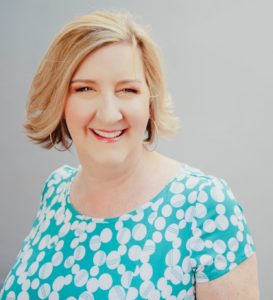 I gladly introduce this podcast’s guest – Pamela Slim. Pamela is an author, business coach and the co-founder with her husband Darryl of the Main Street Learning Lab in Mesa, Arizona.
I gladly introduce this podcast’s guest – Pamela Slim. Pamela is an author, business coach and the co-founder with her husband Darryl of the Main Street Learning Lab in Mesa, Arizona.
Pam focused her first decade in business as a management consultant and has advised thousands of entrepreneurs as well as companies serving the small business market. With her skills and experiences, Pam has already written three books: Escape from Cubicle Nation (named Best Small Business and Entrepreneur book of 2009 from 800 CEO Read), Body of Work (2014 with Penguin Portfolio) and her latest The Widest Net (2021 with McGraw Hill).
The Widest Net explains how to build strong diverse relationships, identify and connect with new partners, expand markets, generate leads, and find new customers in places you may never have considered. It aims to guide you discover and create a dynamic new model for growing your business by connecting with customers outside your usual field of view.
If you’re interested to know more about Pam and her amazing works and accomplishments, you may click here to access her website.
I hope you enjoy this engaging interview with Pamela Slim. Happy listening!
THE BOOK
The Widest Net aims to guide you discover and create a dynamic new model for growing your business by connecting with customers outside your usual field of view. It also show how to:
- Search outside your own lens/bias/routine/history to target ideal customers.
- Attract the interest and attention of new leads by learning more about them authentically.
- Develop products and services suited to these customers.
- Sell through a trusted reciprocity framework where your customers become part of your ecosystem and you each help the other grow.
- Build and sustain loyalty and trust with new customers.
- Nurture a diverse and resilient customer base by identifying and adjusting to the ideal customer target over time.
THE AUTHOR
Pamela Slim is an author, co-founder of a small business learning lab and small business expert. She founded her company in 1996 and focused her first decade in business on creating and delivering training programs for large companies such as HP, Charles Schwab, 3Com, Chevron and Cisco Systems. Since 2005, Pam has advised thousands of entrepreneurs as well as companies serving the small business markets.
You may also refer to the transcripts below for the full transciption (not edited) of the interview.
Greg Voisen
Welcome back to Inside Personal Growth. This is Greg Voisen and the host of Inside Personal Growth. And joining me from Mesa, Arizona, she was just telling me that a few days ago, it was like 115 degrees today maybe not quite as hot and I made her turn off the fan, unfortunately. So if we just got the ACI is Pam Slim, Pam, Good day to you? How are you? I am wonderful. Thanks for having me here. Well, it's good to have you. She has her own podcast show. For all my listeners, you can get her at Pamela slim.com. There you can learn more about the learning lab, her classes, her books or services. The last time we had her on was 2014. And that was for a book that she wrote called body of work.
Pamela Slim
And it was Cubicle Nation. Before that. We'll put links to those in our blog entry for all of our listeners. You're really going to enjoy this listener of this podcast. Do you have a copy of the book near you?
Greg Voisen
Why does Merritt here? Yeah, let's angle it out. Look up. That's book because I don't have the book itself. But that is the book we're going to be talking about. It's called the whitest net. And if there's anybody out there that could be qualified to speak about casting a wide net, it will be Pamela Slim. Let me tell you a little bit about her. She's not their business coach and the co-founder with her husband Darrell at the Main Street Learning Lab in Mesa, Arizona, former corporate director of training and development at Barclays global investors. Pam focuses her first decade in business as management consulting, working with large companies such as HP, Charles Schwab, three M, Chevron, and Cisco, and many more. I'm 2005, sous vide 1000s of entrepreneurs as well as companies serving the small business market, such as key Progressive Insurance, Constant Contact Prezi. And on and on, pram partnered with author Shawn Kane to build and launch the quiet revolution. She's written three books, as I mentioned, escape the Cubicle Nation, the other one, which was the body of work, and this one, which we're going to be speaking about, she lives in Mesa, Arizona with her family. And if you go to her website, you'll see a beautiful picture. I was just commenting about her husband and two children. Well, Pam, now my listeners know everything about you. And they can always find you on the web anyway. Find them on Facebook or LinkedIn or Twitter, wherever you want to go. She's there. She's out there. Because believe me, she's great at what she does. Your book, the widest net, unlocked untapped markets and discover new customers right in front of you. I think that's a common problem that people have is finding customers right in front of them. But I wanted you mentioned in the book and the acknowledgement in this book that it was a collaborative, this collaborative effort, this book between you and the key guardians, at Main Street Learning Lab, and it's Ke Ke is that he said,
Pamela Slim
would be the phonetic way to say it. It's a Navajo word. Yes, yes.
Greg Voisen
And the Navajo, obviously, your husband looks like he's of Indian descent, Native American Indian descent. And what a beautiful thing because they have such understanding about how to take care of the earth. I just love it. How to live right. Can you speak about the incubator you started with your husband, Darrell and Mesa and how this influenced you writing the widest net?
Pamela Slim
Absolutely. I often call myself an author practitioner, because I instead of thinking up cool ideas, I tend to write about the kinds of things that are important to my clients, and then the core of work that I'm doing. So a lot of the impetus for the widest net was spending many years working with business owners who as you said once they knew what they wanted to build, always had the question, where's my audience? Where are my customers? And then also, as I looked at really more than 30 years as a community builder, believe it or not, my degree in college was community development. And so I've always been fascinated about how it is that we create a really inclusive environment and one that reflects the communities that we live in. So a lot of the route for establishing the Main Street learning lab was recognizing through I did a 23. City Tour in 2015, is early research for this book. And I asked a central question in each city. How many of you have ever seen a Native American business presenter presenting at a business conference topic? Not many, only seven out of 23 cities and a few 1000 entrepreneurs. So my husband and I just said wow, the problem is not that they don't exist. There are 10 10s of 1000s of amazing indigenous entrepreneurs, the problem is there's no visibility. So we set out to do very deliberate, slow, integrated, taking your time community development here. And our mission, at the heart of what we do here is really just to highlight the leadership that exists but is rarely seen. And then locally to do I know I do everything I can to be connecting that amazing talent and leadership to opportunities that we have happening here.
Greg Voisen
Well, if they want to, they can learn more about the learning lab by just going to your website and clicking on the learning lab. It's actually a physical location, you'll actually see some pictures than working with people. Yes, they've opened up a brick and mortar Learning Lab, which doesn't, just isn't online, which is really cool. Because if for my listeners, for those of you who have never been to Mesa, Arizona, a great place to do it, and such a burgeoning big city that's growing with a big presence of Native American. So, you know, I think you hit the nail on the head. Now, we'll kind of switch gears because the Learning Lab is really, I can tell your love along with your husband. But writing and lecturing, and coaching and speaking to people and advising businesses, is really your love, love. That's your big love. Right? You tell a great story. In the introduction of the book about Carly the founder of a brand new business, it was in Canada, that was quite successful in the beginning when she started, and then it began to taper her revenues. Your advice to her was instrumental to getting her back on track. And the result of that was this widest net method. Can you tell the story and how you came about developing the WnM method?
Pamela Slim
Yes, Carly Cunningham, who runs big bold brand in Vancouver has been a longtime friend and client. And like many people who have been in business for a while found herself in that place where she had always been great at what she did, she had plenty of clients. But she spent a little too much time in delivering the services and not enough time in seeding opportunities. So when we started working together, she was at one of those dry points that probably many of your listeners have found. I've been in business 26 years, I know that they happen if you're not consistent and taking action. So what I noticed about Carly, and for her in particular, it was the part of the widest net method that is about tiny marketing actions, she was at a stage where it can be frustrating can be a bit overwhelming to know how to kick start when you've had a thriving business. So we started really small looking at some of the science of books like tiny habits by BJ Fogg or atomic habits by James clear, that states the truth, which is if you focus on tiny steps, small incremental changes every day, you're much more likely to sustain the habit of marketing. And you're also much more likely to have consistency in building relationships. So I started with this method inspired by a lot of what I was seeing and habit change. And Carly is a very competitive person, she's done competitive sports. She's always if you have a plan, she will stick to it. It's a really a favorite characteristic and a client. And so she was very serious about her pattern and method of tiny marketing actions. And she did them every day, and gave herself gold stars when she did them and ended up having a really profound turnaround, and just a whole shift change in the way in which she grew her business. So she I tell her story throughout the book.
Greg Voisen
Yeah, you do. And I remember reading that tell the listeners of just a few because we're gonna get into more of this. But some of those tiny actions, you know, BJ Fogg has been on here. And again, to get people into the psychology that's required to take those small steps is one thing. And then the next thing is the actions they've taken and the results from the actions because she actually started having quite a bit of success as a result of that. So what are a few of those things that you advise her to actually change the habit of and do regularly so that she could actually have greater results.
Pamela Slim
The process of tiny marketing actions is where you zoom up for a minute, and you do take a snapshot of what are the best strategic areas to be focusing those actions in we'll talk about this I know a little bit later in our conversation about the bigger method. But when we looked at her best sources of work in the past, very often it was because she was active in her community, she would have coffee dates with people she would be connecting with who I call peanut butter and jelly partners, people who served a common client, but in a highly complementary and non-competitive way. And so for her or where we leveraged what she was good at doing before we reactivated, where she created a specific list of people who she hadn't connected with recently, she reached out just generally with texts or with a quick LinkedIn message to do a check in. And she set up a time on Fridays where she actually set up in a cafe. And she would have a rolling cast of friends and characters who would stop by the table and check in for coffee. That was one thing we found for her that for the region where she lived, the kind of network she had was a really powerful way of reactivating. The other thing we did is a tiny marketing action was for her to begin to share more of her expertise in small ways on LinkedIn, so that she was more visible to people who were in her broader network. The thing that's important about tiny marketing actions is there is the habit of just giving yourself permission to be reaching out and sending the email and introducing yourself to somebody I always say, if you have the instinct where you're like, oh, that's an interesting person, just continue leaning in and fire off the email when you have the inclination. But the strategic part is identifying for you. Where are those areas where you're most likely to have an effective connection? And so that's what we did with her. Yeah, zoom in. Yeah,
Greg Voisen
I think as they say, who's your avatar, you get into that kind of defining who your best prospect is, was a prospect. In this case, now you have 10 important steps in the book, and each is a chapter. And you start with finding the mission at the root. And I agree that this is very fundamental. But a lot of times, it's not where people start, they start just go ahead and marketing. And you mentioned that we spend an inordinate amount of time and money figuring out how in our business, but that we fail to define the deep compelling why that is the Simon Sinek. Why, why are we doing what we do? Like you did with Main Street learning. So why does having this compelling mission affect all the stakeholders in a business in your estimation, because there's so many stakeholders, there's vendors, there's your clients, there's the employees, but it's so important to have this mission. And that's where you want people to start.
Pamela Slim
It, it's the central part of the method, because it's the entry point for understanding how it is that you begin to define your other ecosystem partners where you're identifying people who are also serving your ideal clients in a highly complementary way with useful tools or resources or information. So it is often extremely unhelpful, the way that we generally approach mission, and I say we, in, in the world, and generally in corporate in the b2b world, where it's super comfortable with mission statements. We know for a lot of companies, they have them, it's an anchor for branding, it should be an anchor for leadership behaviors for the culture of the company, it really is that true north, that becomes a decision making mechanism so that you make sure that you are always acting in alignment with your mission. And making decisions, I think, is one of the biggest parts of running a business. If you're if you're unsure what marketing strategy to use, or who to partner with or who to work with, you always are going to come back to that place. So that to me is just the starting place. That's so critical. And I really focus on it more, as in I know more of the independent consulting or in the world of internet entrepreneurship, there's a lot of focus, where people might say My mission is to be location independent, and to have passive revenue, to which I say, that's amazing. That's part of what you want as a person. But that does not a business make, right, that's a quality of life for you. That's not contributing to something valuable in the world. And your customer is not going to be excited that you work one month a year and you spend the rest in the French Riviera, like they may be jealous, but it's not really connecting with what's important to them.
Greg Voisen
So important, so important. And I think really, it's one thing to write a mission statements, it's another thing to live it, you know, because a lot of consultants come in and do mission, vision, value purpose, right? And you see the values hanging on the wall and you wonder if the culture really gets it. If the culture is living it if the culture is I say imbibing it in other words, are they drunk with it? You know, and I don't find it happening as much where people are drunk with it. There are some companies that you and I could talk about where the employees are drunk with it. You know, as they say, they kind of drunk the Kool Aid. They helped make that mission statement and, you know, they're really they're really engaged. What are the four critical principles to the widest Neff method to creating a clear mission for the business.
Pamela Slim
The first is, as I said, to make sure that it's centered on your customers, it's not about benefits to you as the business owner, it is really centered on what is your customer trying to do. So that's the first part. The second thing is, it is really deeply rooted in this problem that you're solving. The I often look the central part of my work over 26 years and different iterations, as a management consultant, as a coach for a long time, as an economic development person. Now here in Mesa, it really is just reducing that kind of anxiety people have when they don't have financial stability, that's a mission to me, that's just so resonant all the time. It sucks. If anybody's been in that place, if you might have you know, had a childhood where you're struggling for money, if you're a parent, and you're trying to provide for your kids, just any form of not having an economic foundation can be so disruptive. So to me, when I always think about the way in which my work might be plugging into that. I love purpose, I love passion, motivation, all that's so important. But that's an example of really connecting with a deeper root in your mission, and then it's also when you're creating a business or growing into new areas in your business, it has to be a problem that your audience views as critical. That's where often I will talk to people who are super fired up about their idea, they're passionate about it, they build it out. But then you want to make sure that there are people who are actually willing to invest money in order to solve that problem. So that's where you always want to be leaning more into conversation with your customers before building the product. And then finally, it connects with your deeper root as a founder, I often think for myself of the way that I spend my precious time on Earth, the way that all of us spend it. Personally, I would rather spend it activating businesses that I believe are doing good in the world are making a positive change. And that's, for me an example of something that's a deeper root of purpose. For me, that gives me great joy and value.
Greg Voisen
Well, I think, you know, it's planet purpose, people profits, you know, it, I know that we talk about what order that comes in. But the reality is, if we're doing good for the world, we're helping this planet become a better place, whether it's, you know, through the way that our children are educated, all the way to the environment and global warming. And I think companies that have a focus on that today, have a heads up kind of an advantage. And I think it's an important one, because, you know, we need to have more people focused on that period. And hopefully, we'll see a massive movement in that direction, which we're beginning to see now. Can you speak about and identifying your values? We just talked, I talked about that a second ago. And most of my listeners have heard about the importance of doing this. But what about how we live our values, and I said imbibe them in the culture of the business. And you suggest, and if you would speak about the VA, because I took it. I actually went to the website, and did the BIA character strengths. From your friend, Greg hurdle, is it hurdle, hurdle. And I found it very interesting. I got the results back, I have them sitting right over here. And so
Pamela Slim
are you brave enough to share maybe your top five I'm curious.
Greg Voisen
honesty, kindness, humor, spirituality, creativity, gratitude, judgment, appreciation, beauty and excellence, and social intelligence.
Pamela Slim
Interesting.
Greg Voisen
They are?
Pamela Slim
Yes. Well, it's so it's so interesting. Yeah, the via character strengths are developed. I love it. Because it's a free assessment you can take online, it's academically valid, which is different than some of the other assessments you have out there. And it's based on global characteristics and positive psychology that span cultures, which I love as well. So it's not just unique to one particular cultural lens. And so the idea that I like of thinking about centering values, as really this driver of decision maker and driver of behavior that you have in your organization, is the more that you know, it's aligned with you and who you are, and having that, you know, honesty and kindness, those things that makes so much sense. When you look at the way you operate, how you approach your work, how you're going to be approaching conversations, the way in which you might create a customer experience for me, I can't I should know this, but I know my top two are actually love and justice. And so it's interesting because to me with having those as threads, they work so clearly together, that I think it's why I'm so passionate about organizations that are doing work specifically to create more safe, equitable spaces where we're really doing things that create a better world. But always the thread that is weaving through that is with love is really with having that that deep connection we have that's what the word cat in my husband's Navajo language means the name of our physical space. It's a system of kinship in Navajo way when Navajos meet each other, they introduce themselves by their four clans to maternal and to paternal. And when they figure out specifically how they're related, that feeling is the way to really understand how you're connected all the way down through generations. And that is so much at the root of what we believe in community building, we don't have to come from the same cultural or ethnic background. But that's always what we're looking for is the place to connect. So we can create, you know, more justice, so that it the way it weaves just like with a mission, when you know the mission that you're on the problem that you're going to solve, then how you're actually approaching it. Your theory of change is the way I refer to it, my old training and development days, it drives the way in which you're going to talk about the problem, the way you're going to approach it, you're going to choose what you stand up for how you do it, where you do it and so forth.
Greg Voisen
Well, I found taking this little they said 15 minutes, it didn't take very long. So for my listeners, we'll put a link to the V IA Institute on character. So they can take this it's in Pam's book as well. There's a there's a link in the book. Pam, your third step is to describe the customer of our dreams we talked about, you know who that avatar is a second ago, you state that is impossible to market to everyone and that we should visualize the person right down to what they're wearing? What are some of the tips that you can leave our listeners with about defining the customer of our dreams? And if you would speak about the audience audit exercise? And who do you want to work with exercise? There were two exercises there.
Pamela Slim
Yeah, in the book I have been I use the method of my friend and collaborator Susan buyer, who is an attitudinal segmentation researcher here in the Phoenix area. She helped me see so clearly through her method that a lot of the ways in which we're historically taught to think about your ideal avatar is based on demographics, what kind of car do they drive? How old are they? What race are they, where do they live, and it's actually extremely unhelpful for us to understand where it is that we can find people because if you might say I want to work with 55-year-old women who drive Subarus, then it can be a little bit hard to also find like who are other customers who are serving those that demographic, because it doesn't say anything about what they're trying to do. So everything about the essence of this approach, the audience is defining it by a problem that they have, or an aspiration that they want to attain, I think about for my clients, I work with a lot of thought leaders who have really powerful bodies of work, they have amazing intellectual property. And usually they're at a stage where they've grown as much as they can, they're starting to burst at the seams, and they realize that they can't just continue to be speeding up what they're doing, they need to start to scale through their intellectual property, it's like, they're just at the stage where like, I have all this stuff. I know, there are many people who want it, but I can't jump on another plane and deliver all the workshops myself, right, or jump
Greg Voisen
on Zoom. So running, they're running out of energy.
Pamela Slim
That's right, they're running out of energy. So that when I describe it that way, when I when I can connect with other people who are also working with business owners who want to scale who were really like, you know, super busy. I can also find other ecosystem partners of, you know, operations managers that help them streamline their business, people who can help, you know, zero in on their ideal client, you know, Avatar, people who can help them to reduce stress so that they have the time and energy in order to, you know, get their planning and their work done. So that's really key in the method is that you are defining your client by core problem challenge or aspiration. And a lot of the work that isn't Susan's methodology, which we use in the chapter is about understanding uniquely like, how, what is that problem that they have? What have they tried before? And why didn't it work? This is a gem of a question to be asking a client a prospect, no matter what your profession is, when you're coming in, they're saying, you know, my servers keep crashing. And we're just, you know, out of our mind trying to figure it out, just say, Well, tell me what have you tried before? And why didn't it work? This can immediately give you such valuable information to know what's important to them or what's missing. And this is as much for you to be positioning what you do, as well as driving your understanding of what you need to build to uniquely solve that, that challenge.
Greg Voisen
Yeah, that's a great way to approach it. You know, when people have a lot of intellectual property like that, like you're advising these people content and They want to get it disseminated to the world. You know it they you talk about casting the widest net, most people think that everybody wants it. Well, the reality is that's not true. You know, you have to become more narrowly focused, understand who your audience is, understand the demographics, psychographics everything that you've spoken about. And I think that's important. In those questions that you asked, and that I was intrigued in that chapter, really great questions that you're asking the reader to ask for themselves. Now step,
Pamela Slim
I just want to say a quick clarification. Because I don't actually say cast, the widest net, it's really to build the widest net, the net to talk about in the widest net, is the net of support beneath your ideal customer, to make sure that they will never fall and they completely solve their problems. So it's a really important distinction.
Greg Voisen
I thank you for clarifying. You know, for me, I looked at everything you said in the book, and I did a really deep dive and you know, it's just kind of you get caught up in a book and certain chapters, you know, and that is kind of how this is, and the one that I really liked was the offer they can't refuse. You tell a great story about Wesson Gaghan B. And he actually, I don't know if I'm pronouncing his back last name, right? How do you say it be? A biani. They were the cofounders of Udacity. And in the founders of Maven, well, as a result of reading your book, I went back to Maven, because I knew Maven was really in a work in progress. It hadn't been done yet. But yet, it looks like it's about ready to really kind of take a huge launch here, because I was on their website yesterday for probably about 20 minutes going through this. This is a software where top creators teach cohort based courses, again, in a very unique way that they're approaching this, because I could see that because many of us out there that are trying to get our content disseminated. This would be a great place, or it's a great, how do you call a new guy on the street with new technology? Can you tell the story and the four parts of building an offer because it was really around? How you talked about the offer that people couldn't refuse?
Pamela Slim
Yeah, westco, she is an amazing thought leader, she created Seth Godin old MBA program, and just did a deep dive with a lot of other clients about the specifics of a cohort based class really looking at the statistics, which are dismal that only four to 6% of people ever finish an online class. So everybody wants to have one. The reality is most people are not finishing it. And so through research, they found cohort based classes, deeply built highly interactive classes are a much better way to make sure that learning happens. And God, as you said, was the was the co-founder of Udemy. And so they formed their team, they have been growing by leaps and bounds. And I've known West for a very long time. So I've always loved her work. And what I appreciate about it is they really zeroed in on this issue of most people are not finishing online classes, there's this promise for people who want to teach it, that people often have this like highly unsatisfied kind of like eating cotton candy, it sounds like a good idea at the state fair. And about five minutes in you regret the fact that you started eating it. That's the experience many people have when they're in online classes. And so what they did is really look at the entire way in which you are engaging with interacting with people in an online environment. And yes, they do have a technology platform of a central place where everything is all together. So the syllabus, the events, the calendar, the updates the forum, that community, so there's a simplicity to that platform. But to me, the magic, in what they understand is in solving the problem of keeping people highly engaged in these cohort based classes, everything about the way that they onboard their instructors who are teaching through Maven is really in modeling, exceptional instructional design and training delivery. I've been a training developing person for my whole career. I was astounded by how smart, interesting new cutting edge they were in the way in which they work with R Us as a cohort of instructors.
Greg Voisen
Well, their model two classes, you know, when you look at it, they're vetting the Instructure. Instructor. Yeah. And whereas many of these programs don't vet the instructors, they just want to get more instructors on so they can generate the override cash from whatever's generated off the sale. In this case, you could see it was a unique approach right off the bat, because they're saying you have to submit your information. We're gonna vet it, you could tell that was happening. I liked that approach. I think they're going to be quite successful with Maven. I think
Pamela Slim
so too. Yeah. So that I just I love that as a model because they're so intent on it. The four parts of figuring out the offer is real. They first figuring out the transformational journey. So going all the way back to what we've done, based on the problem you solve based on your particular client who has a problem that you want to help them with, where are they starting? Where are they going from maybe being stressed, overwhelmed, not having it together to then where's the end part of the journey where their problem is fully solved. And so you need to define first, what is that transformational journey, then diagnose what's preventing them from solving it. And there's usually a whole number of things within that for your business, decide what parts of those problems to solve that you actually want to solve. And then absolutely, you know, refer the rest, that's a very important thing for having a focus and a niche is not trying to do at all because that's where you just build a big behemoth of a company, and zero in on the part you can really help them to do. And then you're going to be engineering, this steps leading up to your offer and leading away from it, that creates this really exceptional customer journey.
Greg Voisen
So well put, and I think it's true when you find the companies that find this kind of magic formula that follow those four steps to creating the offer, you know, the uptake, or the people who have interest is huge, but they're not, again, trying to capture the whole world. That's that what they are very focused on the kind of people they want to capture, and they've done their work. Now you have step five is the watering holes where they gather, you state that the ecosystem has become a buzzword in economic development. You also mentioned one of the foundations that wrote and I actually went to their website as well, on ecosystems 2.0, you've mentioned that there is nothing you have seen, that helps business owners grow more strategically and quickly than looking at their marketing through the lens of an ecosystem. Can you explain the ecosystem in the watering holes? And also, what are the 10 segments? If you could mention them? of the ecosystem? We'll
Pamela Slim
Yes, so as we're looking, we're talking through the overall method of the book, the first quarter we just talked about is really the foundation, what is that strategic view that you have about what you're doing, the mission that you're on and how you're going to do it? The middle part is really understanding where is this ecosystem that is surrounding your ideal customer. So we take that definition of an ideal customer, for you put them in the middle of an ecosystem. And I define that by the places in person and online, where there are other people, companies, organizations, who are offering information, resources, tools support to help them solve that problem. And so from that context, you have in the ecosystem wheel. As an example, there are thought leaders and influencers who are helping solve the problem. There's governmental institutions, media hubs, blogs, podcasts, news stations, there are for profit companies, people building apps or tools for people to solve that problem. There are events, faith communities, in certain cases, there are nonprofit entities, their academic institutions that often are focused on solving that problem. There are associations and clubs. And then there's all kinds of service providers. So in my own experience, looking through the lens of an ecosystem, when I'm helping people to really scale through IP effectively, by definition, I work every single day with intellectual property attorneys, web designers, graphic designers, branding experts, sales experts, all kinds of software companies that are powering the business of the clients that I that I'm working with. And all of us together are creating this net of support for the ideal client. So when you look through that lens, strategically, at first, when you zoom out and see the totality of the market of what's in the ecosystem, then you're going to really narrow in and find what I call watering holes. So these are the places in person and online, where you have a great number of ideal clients as an audience that are gathered by somebody other than you. So this is where it can be super strategic to be on that podcast, where somebody has spent years building an amazing audience. And so when you connect there with your interviewer, all of a sudden, you have this beautiful connection with other people who are aligned, or like I've done a lot partnering with companies that serve the small business market, I might work with somebody like keep or GoDaddy, and I could be delivering a webinar on tiny marketing actions. GoDaddy is bringing in 1000s of their customers, which is so great for me, but I'm also providing something to their customers, which is hopefully valuable to them as well to help them grow in their business. So that's the whole idea is interdependency, having lots of referral partners. And when you get to know the key partners who are the best for your ideal customer, that's where you have a lot A lot of efficient and effective referrals that drive your business.
Greg Voisen
Well, you had mentioned and I was meant to say this, but for the listeners in the book, The Kauffman Foundation and the entrepreneur ecosystem, building playbook 3.0, which was something you had mentioned in the book. I actually went to the website and I would say to people who want to learn more, you're gonna get Pam's book. But if you want to take a deeper dive, you might want to check out Kaufman dot O R G ecosystem. That was something that you had mentioned in the book. Yeah, it's causing.
Pamela Slim
And I'll say, you know, there's so much wonderful research, I've been people focused on ecosystem for a long time. The story I used for the chapter on ecosystems was crossbeam, which is a software company. Yes, sir. SAS companies. And I just spoke at their conference actually a couple of weeks ago in Philadelphia. And these are all tech partners who have been talking about ecosystems for years in the SAS world. This is a known entity, they know that their own individual software is never going to be solving all the problems for their clients. Right, the most effective way for them to build market share, is through partnerships. So I love the fact that they have been far ahead. One of the things Bob Moore, who's the CEO of crossbeam, said he said, he built his old company, which was also built around data. But he said we basically built a place where data went to die trying to just do everything for our clients and customers. His competitor at the time sold their business to Google for I think,
Greg Voisen
2.8 billion $2.8 billion. Yeah, that's quite that much
Pamela Slim
for his. Yes.
Greg Voisen
He was a little miffed. I think you made a kind of sound like that. But that yes, I remember reading that book very clearly
Pamela Slim
in your book. Yeah, that's, that's what got me excited about his story is, you know, he said, like, never again, will he look to just building individual empires, it's really about ecosystems of partnerships. And I just think the entrepreneur world is a number of steps behind where a lot of the SAS world has been for many years.
Greg Voisen
I would agree. And that's because the, that hasn't been their focus, whereas the SAS world, that's how they make their connections. And that's, you know, that's really the world. But the I would say, after having gone to this website, and looking at the ecosystem playbook, built building ecosystem playbook, 3.0, definitely, for my listeners, we'll put a link to that, you know, the seeds you plant start off with a great conversation that you had with Heather Kraus about building, we all count a project with the mission of creating equity and data science. You mentioned that there comes a time in every client's journey, where they realize that all the conceptualizing, planning and strategizing about building and an audience needs to end in a process of connecting with real live human beings needs to begin. And I think that happens in a lot of people there. They do way too much research, and then they don't ever do anything with it. Can you speak with our audience about creating their seating plan? And what are some of the tools that you would use in creating the seating plan?
Pamela Slim
Yeah, Heather is one of my favorite people and clients. We I started working with her when she just had the idea. So we started from the ground up for this initiative, as a data scientist herself. And she's also a very clearly self-professed introvert. And she joked with me when I that I wrote about in the book, she said, if you want to know how much I don't really want to be building community, if I go to a Starbucks, and they start to know my name, I will drive 10 kilometers to another one. Not know that. Whereas I am like running to people on the street is complete strangers as a total extrovert. I love to build community more than anything. It's so helpful to use this method with her. She's a wonderful, lovely person. And she, you know, she loves people, but just her inclination is not to do that. So what we found with her, after doing this strategic analysis of the best places for her to begin to connect with other ecosystem partners, as she was building her initiative, is to create these very small 15 minute conversations where she could begin to connect with people and just get to know them a lot of the human connection. I think the reason why people do spend so much time in research mode is all of a sudden, it makes us feel like we're a junior high person at a dance that's just so awkward. And all of a sudden, you feel like you just can't go and you can't ask somebody to dance or you wait for somebody to ask you to dance. It kicks us into our most vulnerable human state, especially early on in a project where we're just exploring connections. So what I learned with the work with her is to create a very specific structure so that when she had those conversations, the first conversation is never ever going to be Hey, this is who I am. Do you want to work with me because that's not the way it works, you wouldn't do that in person walk up to somebody on the street and ask if they want to support your business or partner with you? You just want to start to get to know each other in small ways. And through doing that. It's been astounding to see how it is that she's grown. She's now working with virtually every large University, Oxford, you know, Harvard, Stanford, huge companies, huge foundations have trained 1000s of data scientists in her method. But what's important to me is recognizing that you don't have to be a raging extrovert, you don't have to constantly be generating activity. She was very specific with her analysis of who would be the best partners to start with. And it's been astounding to see your success.
Greg Voisen
Yeah, it was, it's a great story. And um, you know, you and I are obviously extroverts, I wouldn't be doing a podcast show if I, for 15 years, and 950 podcasts, if I didn't have this ability to be a Maven and connect and do the things that I do. And people are always amazed that you know, how many people I can connect them with? They go, Oh, my gosh, can you help me? You know, get to Marshall Goldsmith, and I said, Yeah, it's a personal friend, I have a problem sending an email to him. And 99% of the time he answers to and then they're so astounded, because he answered, because you have equity, build up with people, as a result of doing something good for them. I think that's the other thing, if you just keep doing good, and do your best, and ask the right questions. The reality is it comes back. And the benefits are huge, right? So I tell people, you know, I know you're an introvert. And I know you must have some trepidation about making that first step. But really, it's not that difficult if you ask questions about them, and listen, and just listen, just ask questions about them. And listen, because everybody, I remember this from Dale Carnegie, everybody wants to talk about themselves, you know, so I think it's a great one. Now, Pam, the widest net, as I say, is a book that is filled with data, stories, information on how to take action to become a better marketer, and manifest what you need. In your business and your life, you didn't leave out one or the other, you actually put them both in there. What are three takeaways that are imperative for our listeners to understand when growing their businesses in your estimation?
Pamela Slim
The first is to, I invite you to have a strategic focus to really build these ecosystems of support for your customers, not an empire for yourself, that is based on self-interest. And you and I have shared what our values are, we know we're both very much driven by the greater good society good. Not everybody is driven by those values. And that is okay, for people even that have different value sets, I do make the argument that it is more effective, more strategic, and you will be more successful in business, even if your goal is to, to you know, get more money and get more opportunity, it is going to be more strategic, where you're looking at the bigger opportunities in the market for partnerships. But if we do that, and we're centering our customers, that is critical, overall with to your success and sustainability. The second thing is that you need to do that work of analysis and strategy before tactics. So much of business advice specially in marketing is very tactical. So people are looking for that magic formula, that's gonna get them everything, you need to take a strategic analysis about where the places where I want to go, who are the people who I want to partner with, you have to be defining your ecosystem by shared values. It's not everybody who is solving that customer problem, who would be your partner. And this goes to what you were saying, and who you're introducing people to, I am very discerning about who I might introduce people to because the Fit I'm looking for is the fit in the value set of the person I'm working with the fit and the value set of the other person. And then with permission, you know, asking them for that consent. If it's a mutually beneficial, you know, connection, it will work, which is the way I know you do it and having this deep equity within your network. Because otherwise, if it's just transactional, it's never going to work. So always strategy and analysis first, and you're like you're, you're bumping up and down, you're going to zoom up, get down with some tactics, zoom up again, make some adjustments and then get back to your tiny marketing action. So that's the second piece. And the third really is around 20 marketing actions. When you do get a clearer sense of the kinds of connections that you want to make. Then it can totally drive taking small steps every day towards it. I have a person who I love who's a thought leader, influencer and amazing artists John Legend is somebody I've written about for years over a decade. He was a former manager MIT consultant. So I love his story escaping Cubicle Nation to be an artist. But I've literally talked about him in every book, every talk just about every podcast. And I'm right now actually in deep communication with his team, that after so many years, we're beginning to look at some threads of ways in which we can possibly connect and to meet. That's the joy of having a longer term strategic perspective, whether it's your big win for a client you want to get, whether it's that podcast guest you're looking to get have the patience to be taking small steps every day. And that's what ends up creating much more sustainability in your business.
Greg Voisen
Great, great wisdom and advice from my listeners, especially those that have businesses, but there's so much weaved into this book. And if you would hold the book up again, because I don't have a copy go the widest net. There you go. I'm gonna put a link to that on Amazon. I'll put a link to her website. Does the book have an its own landing page? Or is it just your website?
Pamela Slim
It does its panelists live.com, forward slash the widest net.
Greg Voisen
So for all of you listening, we'll put a link to that as well. Pam, it's been a pleasure having you on I know that I made you turn off that fan, you can turn it back on again now because I know it's a blazing there. But I appreciate you. I appreciate your contribution to the world and what you're giving, both through your learning lab and Mesa. And through the work that you're doing working with people that have content and you're trying to get it out to the world. I know that you're a huge benefit to them. So thank you, thank you for everything and stay to you. Thanks for being on personal growth.
Pamela Slim
Thanks for having me.
Sign up to receive email updates
Enter your name and email address below and I'll send you periodic updates about the podcast.
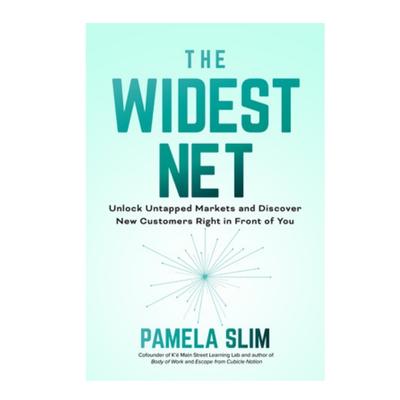
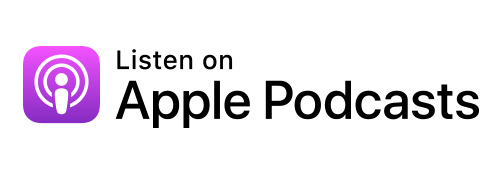

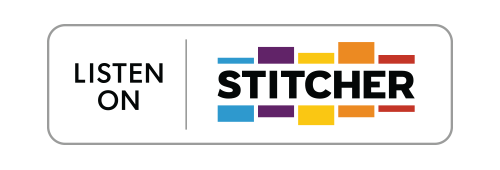

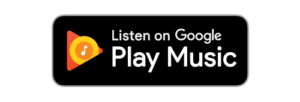
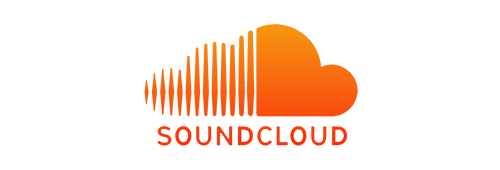

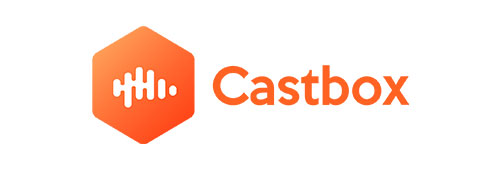
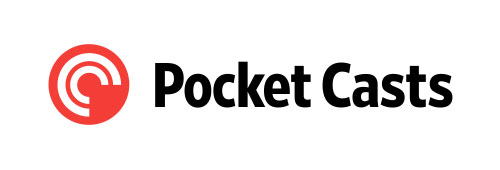
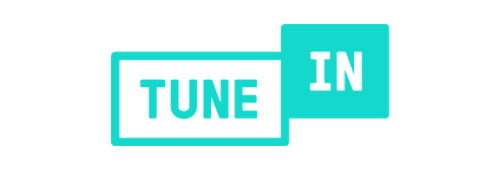
Leave a Reply